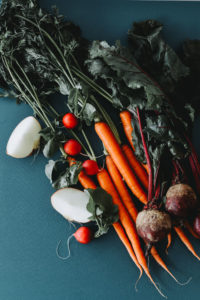 Macros, calories, sodium, grams of carbs, percentage of fat, food trackers – these are all different ways that we use to asses how a certain type of food is going to impact our body. And of course, when I say that, what I really mean is lose weight.
Macros, calories, sodium, grams of carbs, percentage of fat, food trackers – these are all different ways that we use to asses how a certain type of food is going to impact our body. And of course, when I say that, what I really mean is lose weight.
Although these can be factors that we consider when we look at food, if we skip looking at the quality or processing of the food, we are missing the point altogether. So, if you have ever felt that you are lost in the numbers or you are doing everything perfectly and still not seeing results, this blog is for you.
Ultra-processed Foods Leads to Weight Gain Even When Macros are Matched
There was a REALLY exciting study (nerd alert!) that showed that ultra-processed foods lead to weight gain even when the macro and micro nutrients where matched. In this study there were two different groups that were given meals with identical calories, sugar, fat, fiber, protein and sodium. The only difference was that one of the meals were created from ultra-processed ingredients and the other was created from unprocessed ingredients. The group eating the ultra-processed meals gained 2 lbs. in 2 weeks, ate faster, increased hunger hormones and decreased the hormones signaling fullness. The unprocessed group had the opposite results.
Another important factor was that both the unprocessed and ultra-processed foods were rated equally as enjoyable by the participants. So the unprocessed group didn’t lose weight because they were crying into their kale salad waiting for it to be over? You can see images and details of the meals here.
The change in blood chemistry and hormones leads us to believe that something in processing has a different impact on our bodies. From a behavioral standpoint, the people on the ultra-processed plan naturally ate about 500 calories more per day. Again, they had access to the same quantity but the unprocessed group naturally stopped earlier.
What is ultra-processed?
Before I go into how to use this info, I wanted to give you a clear definition of ultra-processed. Sometimes we can lump all food that is not plucked from the earth into that category, which can make you feel like if you aren’t living on an organic farm, you are spiraling towards death. I can’t promise that you will live forever but stick with me and we will make it through today!
The below is based on NOVA classification system.
Group 1: Un/Minimally Processed
You can think of this as food that you would recognize in nature before anything has been done to it. It may be found in a package or changed environments for preservation (freezing, drying, chopping, roasting, etc.), but it hasn’t been altered from its original state. You can also find a few of these together (think trail mix) as long as nothing has been added. Fruits, vegetables, animal protein, milk, nuts, seeds, algae, etc. are in this category.
Group 2: Processed Culinary Ingredients
These are things typically produced from the above group typically for the use in cooking or enhancing flavor. Examples are salt from seaweed, sugar from cane, honey from combs, oil from olives, butter from milk, etc.
Group 3: Processed Food
These are fairly simple foods that are a combination of the above two groups. They tend to have 2-3 ingredients but are still recognizable as food. Examples are cheese, cured meats, fresh bread, salted nuts, canned fish, jarred sauces, etc. Although the title “processed” has become pretty dirty in our culture, these aren’t inherently bad. However, it may take a little investigation to figure out the level of the processing. A simple way is to look at the ingredients. You should recognize all the words and there should be less than 5 (ideally 2-3).
Group 4: Ultra-Processed Food
These are food and drink that can contain ingredients from the top 3 groups but also ingredients that you wouldn’t normally use in cooking. The ingredient list tends to be very long (>5 ingredients) and most in the middle and end are words you won’t recognize as food. They serve the purpose of making the food hyper-palatable (hard to stop eating), marketable (either because of color or adding in a trendy ingredient), quick to eat (no preparation) and shelf stable. Examples are soda or sports drinks, mass produced breads, cereals, pastries or candy, diet or weight loss foods, ready to heat meals, etc.
What do you do with this information?
If you have been focusing on numbers (macros/calories/grams) and frustrated, you may want to look a little deeper into the quality of the food behind those numbers.
The ideal is to be getting the vast majority of your food from groups 1, 2 and 3. However, it is important to assess where you are and build from there.
This was a small study that showed two extremes. That means that more studies need to take place. It also means that you likely fall somewhere in between. Most Americans get at least half of their food from the ultra-processed category. If that applies to you, look at what you are eating and see where you could make a small change. It could be trading in your protein bar for some trail mix or swapping out your spaghetti sauce for one with less ingredients. I promise that overtime these small changes will add up!

